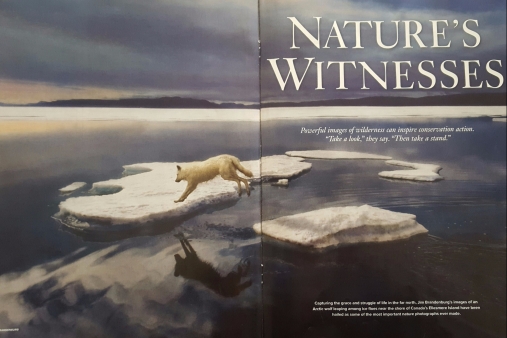As the saying goes, a picture is worth a thousand words. When trying to communicate topics such as the environment, environmental issues, and environmental conservation, this is more than true. Pictures tell stories, educate, and inspire. Since a large portion of the human brain is dedicated to visual processing, images are essential in educating the public, as well as in piquing their interest and inspiring action. According to the article “Nature’s Witnesses”, in National Wildlife magazine, photography plays a large role in environmental education and conservation. As an amateur photographer pursuing a career in science and environmental communication, this article was especially intriguing.

According to the article, the power of photography actually inspired the formation of the National Wildlife magazine. “This capacity of photography to focus public attention on critical issues helped inspire the National Wildlife Federation to launch National Wildlife magazine in 1962″ (Warren 22).
The use of images to spread awareness about nature is not a recent innovation. In fact, it has been used by people as widely known as the artist, Ansel Adams. According to the article, “He used the popularity of his photography and his own status as a respected artist to crusade for conservation throughout his life, personally lobbying leaders at all levels of government to protect wilderness and limit commercial intrusion into wild lands” (Warren 22).
The use of images in education and conservation awareness is well known worldwide, but we often don’t think about the story behind every photo, the work that was put into it, and the cause that inspired the photographer to capture it.
Photographers such as Joel Sartore, Flip Nicklin, and Robert Glenn Ketchum recognize the power of images and use them to cultivate environmental education and spread awareness of the need for environmental conservation, as explained in National Wildlife.
According to Ketchum, his work is “‘photography in the service of conservation advocacy.’ From New York’s Hudson Valley to Alaska, he has spent decades creating images that define tough environmental choices, spotlighting how human activity can degrade pristine lands” (Warren 22). These images are used to portray our impact on the earth in a way that words are not capable of.
Flip Nicklin provides very inspiring words that amplify the importance of visual communication in science: “‘Photographs capture people’s imaginations in a way that graphs and data can’t'” (Warren 24). No graph or list of data alone can attract the attention or inspire groups of people in the world. Photos, along with words, are the key to educating people about the wonders and worries of our world.
One of my favorite wildlife photographers, Joel Sartore, documents the biodiversity of the world’s animals in captivity to give a voice to the species that might not otherwise have one and encourage people to support the conservation of our planet’s wildlife and environment.
According to the article, “Joel Sartore is committed to giving biodiversity a face–thousands of faces, in fact–through his Photo Ark project. So far he’s made portraits of some 6,400 animals in more than 150 zoos, aquariums and wildlife rehabilitation facilities around the world. The photos have appeared in books, museums, even on buildings at the Vatican. His goal is to document every species held in captivity, including North American natives from the critically endangered California condor (F) to the ubiquitous opossum (K). Sartore admits that engaging viewers with charismatically challenged creatures can be tough. ‘It’s just human nature to be drawn more to koalas than lizards,’ he says. ‘But the Photo Ark was really made to give a voice to the least among us. For smaller animals like frogs, toads, snakes and spiders, this may be the only chance for their tales to be heard'” (Warren 26-27).
All in all, photography is truly at the heart of science and environmental communication, and is essential to effective education and inspiration. It is rarely recognized as such a powerful thing, but pictures really are worth a thousand words.
Resource:
Warren, Lynne. “Nature’s Witnesses.” National Wildlife, December-January 2017, pp. 20-33.












Leave a comment